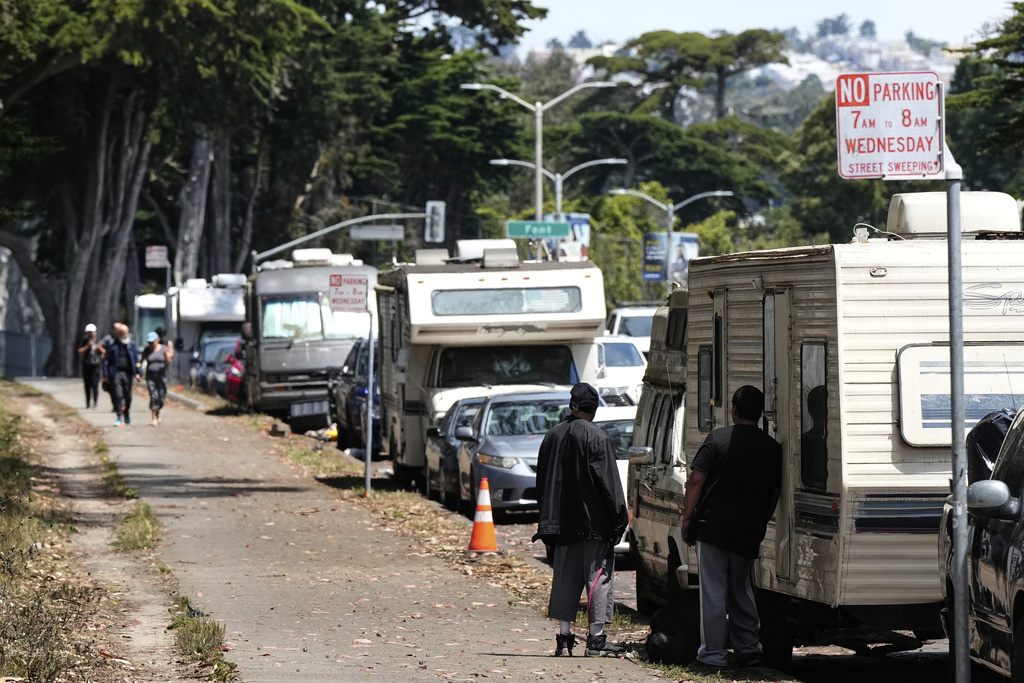San Francisco’s New Policy on RVs and Homelessness
San Francisco is taking a bold step to address the growing issue of homelessness by implementing strict new parking limits for recreational vehicles (RVs) in an effort to keep sidewalks clear and reduce trash accumulation. The policy, which is set for final approval by the city’s supervisors, targets at least 400 RVs currently residing in the city. These vehicles serve as temporary shelters for individuals and families who cannot afford traditional housing, including many immigrant families with children.
Mayor Daniel Lurie has emphasized that the policy is necessary to ensure public safety and cleanliness. According to Kunal Modi, who advises the mayor on health, homelessness, and family services, the city has a responsibility to provide stable housing solutions for those in need while also maintaining clean streets. “We feel the responsibility to help them get to a stable solution,” Modi said. “And at the same time, we want to make sure that that stability is somewhere indoors and not exposed in the public roadway.”
However, the proposal has faced criticism from advocates who argue that it is harsh to force people to give up their only homes in exchange for limited housing options. Jennifer Friedenbach, executive director of the Coalition on Homelessness, pointed out that the city is behind on establishing details for an accompanying permit program. This program would allow RV residents to avoid parking restrictions if they are working with outreach staff to find housing. She warned that some individuals could lose their RVs without adequate support, potentially leaving more vulnerable people, such as those sleeping on sidewalks, without assistance.
The Impact of the New Rules
The proposed rules include a two-hour parking limit for all RVs and oversized vehicles longer than 22 feet or higher than 7 feet across the city. Under the permit program, RV residents registered with the city before May will be exempt from these limits, but they must accept offers of temporary or long-term housing and surrender their RVs when it is time to move. The city has allocated over half a million dollars to buy RVs from residents at $175 per foot.
Permits will last for six months, and those who arrived after May will not qualify for the program. This means that families living in RVs after that date will be unable to stay within city limits. The proposal was approved by the Board of Supervisors with two votes against, indicating some level of division among officials.
Challenges Faced by RV Dwellers
For many RV residents, these vehicles represent a lifeline in a city where affordable housing is nearly impossible to find. Carlos Perez, a 55-year-old produce deliveryman, has lived in an RV in the Bayview neighborhood for over 30 years. He supports his brother, who is disabled, and finds the RV to be a practical and convenient option. “We don’t do nothing wrong. We try to keep this street clean,” he said, showing off his home, which includes a small kitchen and a houseplant.
Zach, another RV resident, has lived in his vehicle for over a decade. He works as a ride-hail driver and pursues photography. While he acknowledges the challenges, he believes that the city should offer more viable alternatives rather than forcing people into shelters. “If housing were affordable, there is a very good chance I wouldn’t be out here,” he said.
City Actions and Future Plans
San Francisco recently closed its only RV lot, citing high costs and failure to transition residents to stable housing. Advocates argue that the city should instead open a safe parking lot where residents can dispose of waste and access electricity. The new proposal includes increased enforcement of RV parking rules, along with $11 million for a limited number of households to move into subsidized housing.
Erica Kisch, CEO of Compass Family Services, noted that while the policy may have punitive elements, it does recognize the need for better housing solutions. “San Francisco can do better, certainly,” she said, emphasizing the importance of providing stable, affordable housing for all residents.
As the debate continues, the city faces a complex challenge: balancing public safety and cleanliness with the needs of its most vulnerable residents. The outcome of this policy will likely shape the future of homelessness in San Francisco and set a precedent for other cities grappling with similar issues.







